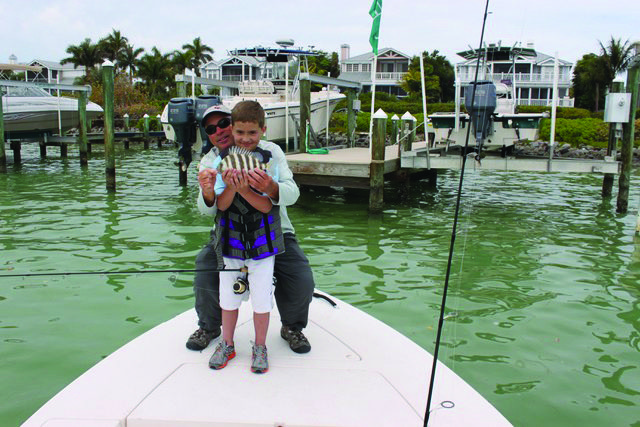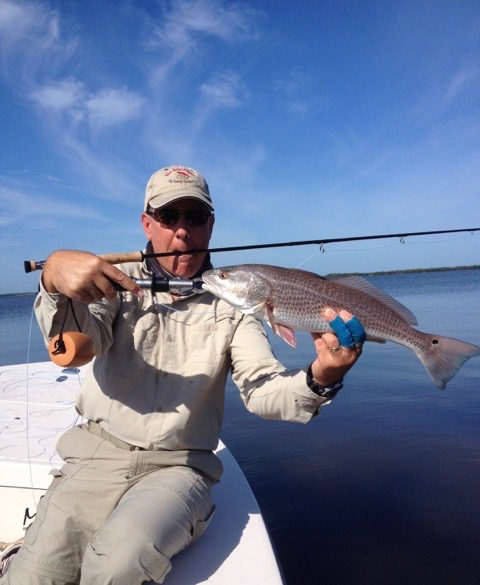Capt. Mike Manis
Towards the end of last month, first thing in the morning, it was noticeably breezy and cooler. This began the transition from late summer and fall into what could be considered a winter pattern. As well, as we get away from summer rain our water clears up, cools down, and the salinity increases. As a result, like our snook seeking stable water temperatures, I’ll begin pushing further into the backcountry to get up into some of our many river and creek systems. As the month progresses and especially after a good cold front our snook should be in full transition mode. As these conditions make bigger fish vulnerable, I’ll concentrate on smaller fish. Most likely, I’ll put in a good amount of time along the east side south of Punta Gorda among the expanse of tidal creeks that can be found from Alligator Creek down to Buzzard Bay outside Matlacha.
Redfish and low water are a great combination. For those with quiet shallow draft skiffs, the next few months provide lots of opportunity. For stealth, poling is preferred; it’s more work but well worth the effort. Across the harbor, the flats and small creek systems at the northern end of Bull Bay as well as the flats between Whidden’s and Catfish Creek can be good. With the cooler mornings, the spotted sea trout bite should improve. In Gasparilla Sound, the thick turtle grass flats off the Three Sisters Islands outside Boca Grande can hold good numbers of trout. In Pine Island Sound, the deeper turtle grass flats, 2’-4’, anywhere off the intracoastal are worth a look.
As the water cools, a favorite prey species, scaled sardines, also look for more stable water temperatures and move offshore. This forces our gamefish to rely on shrimp, small crustaceans, and localized bottom associated prey fish. Therefore, I’ll begin throwing small clouser type patterns. They’re a good match for this smaller prey and I like the way they emulate the motion of a jig and get down in the water column where small crustaceans hide. Unlike some patterns, they don’t stop moving during the retrieve when not being stripped and actually drop like a fleeing prey.
On the bars surrounding the open harbor, pompano can provide a change of pace. I like looking outside the bar along the southern end of the west wall and off the hard bottom outside Cape Haze Point. Here, the clouser again is a perfect fly. On a spinning rod, a 1/4-ounce Nylure jig is tough to beat. Lastly, look for sheepshead to begin stacking up around any artificial reef, dock, or pier structure. Moreover, I’ve been seeing good numbers along many of the shorelines I fish. From land, the Placida trestle is a favorite spot. Here, shrimp and fiddler crabs are the bait of choice. Until next month, good tides.


